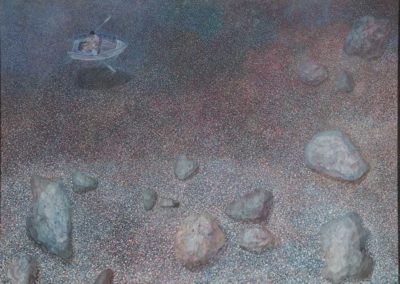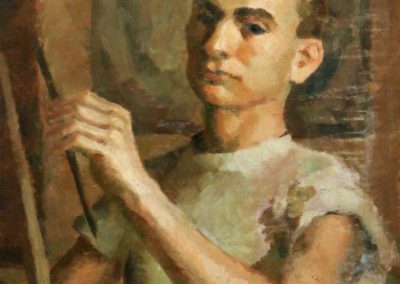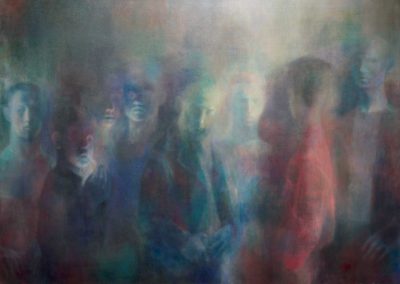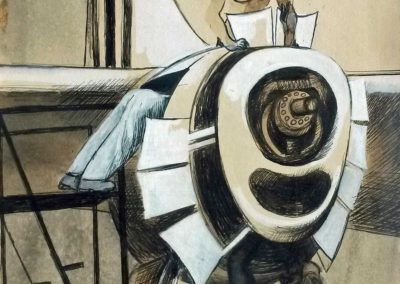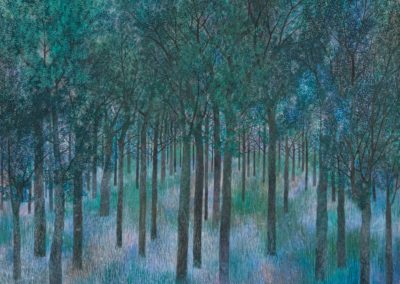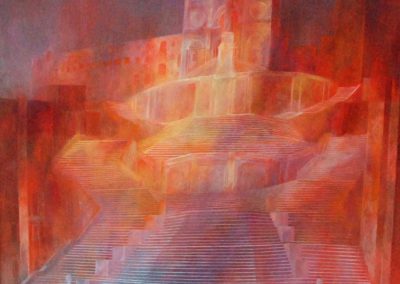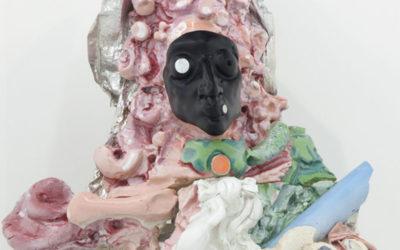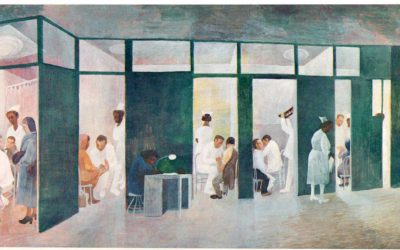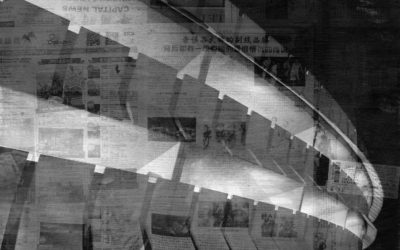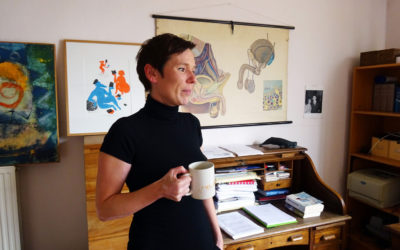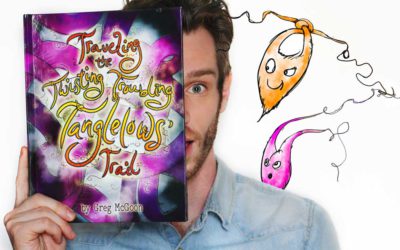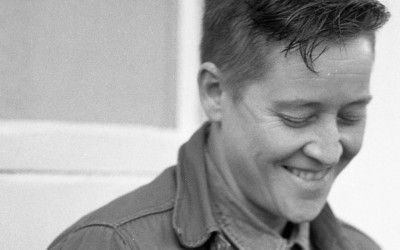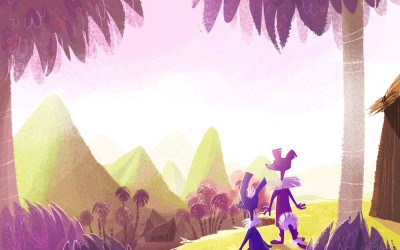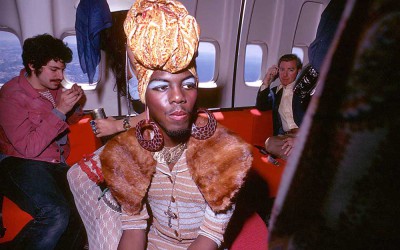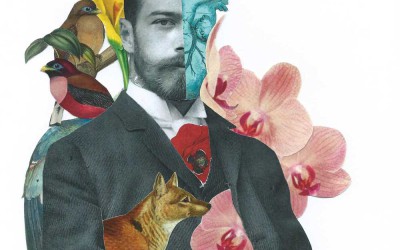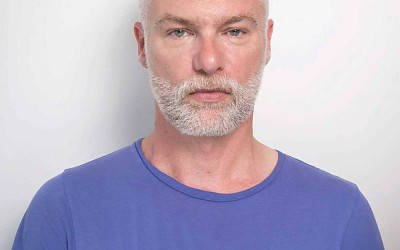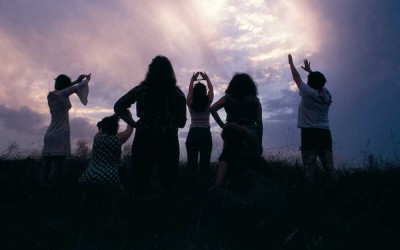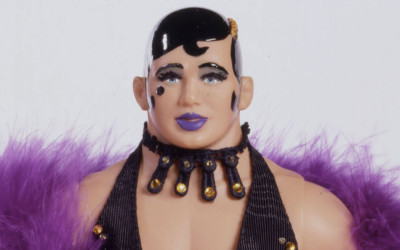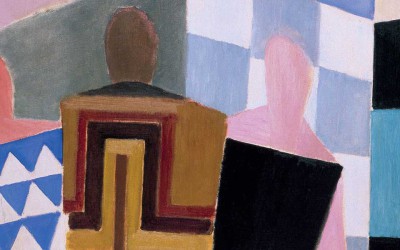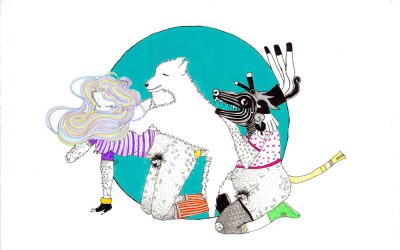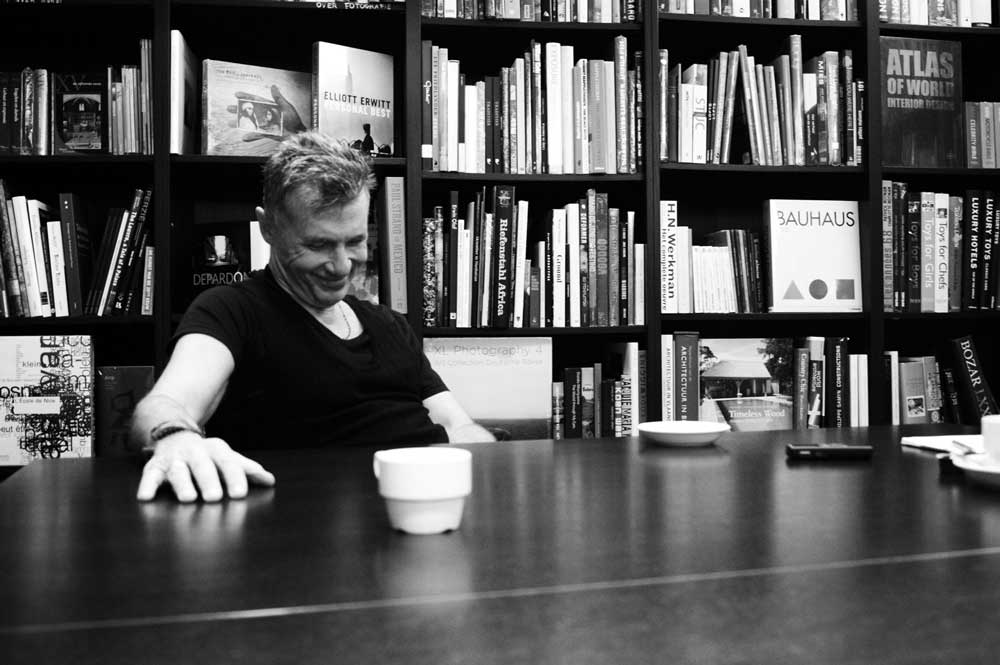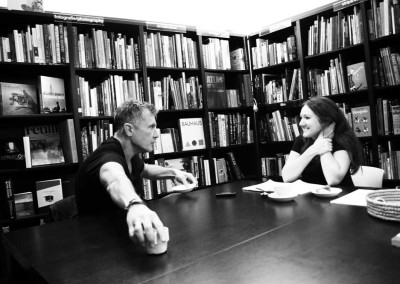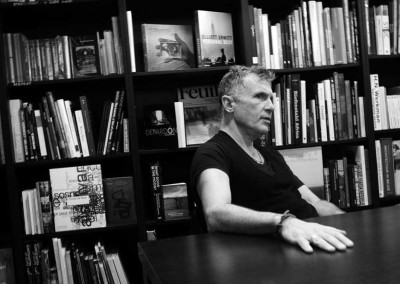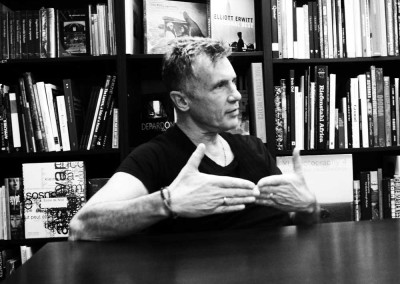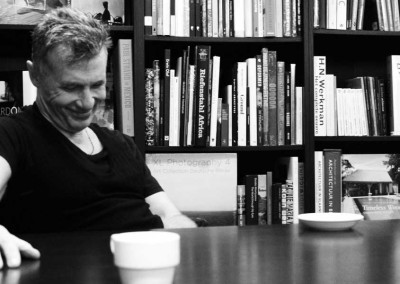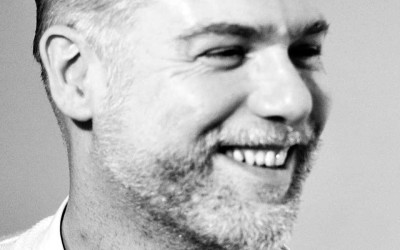From the moment I started at the academy I noticed that sculpting was very demanding on both a physical and a psychological level. This has never diminished. I very much like what I do, but a large percentage of my practice involves…..

Bernard Perlin
Bernard Perlin
Text JF. Pierets Artwork Bernard Perlin
Bernard Perlin (1918-2014) was an extraordinary figure in twentieth century American art and gay cultural history. An acclaimed artist and sexual renegade who reveled in pushing social, political, and artistic boundaries, his work regularly appeared in popular magazines in the 1940s, ‘50s, and ‘60s; was collected by Rockefellers, Whitneys, Astors, and Andy Warhol; and was acquired by major museums, including the Smithsonian, the Museum of Modern Art, and the Tate. In One-Man Show, Michael Schreiber chronicles the storied life, illustrious friends and lovers, and astounding adventures of Bernard Perlin through no-holds-barred interviews with the artist, candid excerpts from Perlin’s unpublished memoirs, never-before-seen photos, and an extensive selection of Bernard Perlin’s incredible public and private art. One-Man Show: The Life and Art of Bernard Perlin has been named a 2017 Stonewall Honor Book by the American Library Association, and is a Lambda Literary Award Finalist.
What triggered you to write this book?
I discovered Bernard and his amazing artwork through my great interest in the illustrious gay social and artistic circle that surrounded the legendary photographer George Platt Lynes in the 1930s through 1950s. Bernard was an intimate member of this great New York gay “cabal,” as he called it, whose members and visitors included such artists and literary such figures as Somerset Maugham, and Christopher Isherwood. Bernard Perlin was the last living member of this remarkable company, then in his early nineties, and so I wrote him. He responded with a friendly phone call that led to another and another and ultimately to an invitation to his home in Connecticut. And so began our close friendship and the unexpected journey towards this book.
Was it important to write this book, aside from your personal connection with Perlin?
First and foremost, I felt a great sense of commitment to getting Bernard Perlin’s extraordinary artwork seen again. But as I began to learn more about his equally extraordinary life, I knew the incredibly compelling story of this unsung gay artist-hero had to be told somehow, and as much as possible in his own colorful, unfiltered way.
As an art connoisseur, what attracts you to his work?
Bernard was a beguiling storyteller – not only in conversation, but also in his art. Every Perlin painting tells a unique story. I’m particularly drawn to his work that can be classified as “magic realism,” in which he interjected unexpected or magical elements into his examination of “real” situations or objects or figures. I always find his perspective an interesting one to consider. In terms of subject matter, I really love Bernard’s “Night Pictures,” a series of paintings depicting the swinging “cocktail culture” of 1950s New York City jazz clubs, street dances, and underground gay bars. The latter were very daring works for him to publicly show when he did, but for Bernard they were just further efforts to depict the full “normal” range of people seeking connection with one another.
He was openly gay in the 1930’s. How did that work out?
While he was very conscious of his sexuality and embraced it from a very young age, it wasn’t really until he went to art school in 1935 in New York that he found a thriving underground gay culture that welcomed him and he easily fit into. He was 16 years old at the time. From that point on, Bernard chose to also live his life “above ground” as a fearlessly openly gay man – doing so during a fearfully closed period in our recent history. It’s remarkable now to consider some of the real risks he faced, sometimes head on. He walked past a sign reading “no Jews allowed” into a department store in Nazi-occupied Danzig in 1938, bought a pair of Hitler Youth shorts, and then boldly walked around in them, as not only a young gay man, but a Jew. Equally remarkable was his attitude about being arrested in a Parisian bathhouse in 1951. In spite of being thrown into a large cage in the middle of a medieval courtroom, and tried in a language he didn’t understand while onlookers jeered, then being jailed without knowing how long he’d be held, Bernard just took it in his stride and thought it all a “great adventure.” He was similarly arrested in Florida and Virginia for “behavior against public decency,” posted bail, then skipped town and carried on undeterred with his cruising and bathhouse escapades. But certainly the most poignant story he shared with me was about his not wanting to fight in World War II, so he had to go to a psychiatrist, be declared a “mental degenerate” as a homosexual, and then present himself as such in front of the draft board. When we talked about this, Bernard confessed that he had long carried a sense of shame over what he perceived to be his cowardice about not going to war, when in fact it was an incredibly brave act to have publicly declared himself a homosexual in 1941. And of course, he then went on to fight the war anyway, but with his paintbrush, producing many now iconic images of World War II as a propaganda artist for the U.S. government and as a war-artist correspondent for Life magazine.
Did you ask him about the most significant changes between being gay in the 1930’s and now?
I did. It was very enlightening for me to learn that he had been able to so freely express his sexuality when he did – although it should also be considered where he did – in 1930s New York, which was somewhat less permissive than it had been during the 1920s, but yet allowed gay bars and gathering places to exist, as long as the police were paid off. Of course outside of New York, such open expression carried tremendous risk. As he explained it: “one was open but with a great sense of consciousness about it.” In the last couple of years of his life, he was delighted by the changes that were then accelerating for gay acceptance. The act of marrying his partner of 60 years was a tremendously important one for him. And they did it solely as a political statement, to add their number to the statistics. Although he had never been conflicted about being gay, Bernard certainly celebrated the fact that society was becoming less conflicted. Or so he hoped.
‘Of course historically up to this point there has been limited gay imagery in mainstream art because it has not been a socially accepted expression. But I’m ever hopeful that that is changing.’
You write about Perlin as a gay artist and you launched the book at a gay publishing company. Why is it important to accentuate this?
The actual artwork should be left to the interpretation of the viewer, of course. We all see the world uniquely through the lens of our own experience and identity. For that reason, Bernard didn’t like having his work linked to a particular style, nor did he subscribe to any particular school of art. He wanted viewers to interpret his work in their own way, free of any pre-established definitions, but yet at the end, he did want them to know it was the work of a gay artist. That the great variety of human experience that he had depicted in his work – that a great variety of people had emotionally and intellectually responded to over seven decades – had all been recorded by a fellow human being who just happened to be gay. By a “variant” himself. It was an identity that he felt very proud of and committed to championing – to “normalizing” in a way, although there truly is no such thing as “normal.” He just hoped his viewers would allow and consider it, in the hopes it might expand their perception not only of his art, but also of our shared humanity.
Does this have something to do with awareness? Showing that artists, movie stars, etc. can also be gay?
Sure, as you bring the gay experience into the fold of the bigger human experience, it does “normalize” it. Just as I feel it’s important to consider whatever particular identity an artist embraces – whether that relates to their gender, sexual orientation, ethnicity, etc. – in the hope it will challenge and expand a viewer’s perspective on their art, but will also influence how that viewer then sees the real world and lives happening around them. Ultimately, we are all human at the end of the day. Isn’t it wonderful that we can see things so differently? In fact, it’s important that we do. Considering that informs all of us about the wonderful variety of the human experience. And toward that end, Bernard found it very important to raise his hand and be amongst the counted as gay artists.
Why do you think there is so little gay imagery in art history?
That’s an interesting topic that Bernard and I actually spoke a lot about. A picture of two men or two women kissing isn’t actually a classical theme in art – “yet,” as Bernard would point out. Of course historically up to this point there has been limited gay imagery in mainstream art because it has not been a socially accepted expression. But I’m ever hopeful that that is changing. Bernard was in the vanguard of artists who were boldly depicting gay themes in their work several generations ago, and happily that mantle has been taken up in recent decades by more and more younger artists. It’s just a matter now of getting more of their work on the walls of mainstream museums to make that “yet” a reality.
Is that also something you aim for with your book?
Absolutely. It’s empowering to have known this man who was at the vanguard of promoting that acceptance just by living his life openly and fully and refusing to compromise. I was so blessed to have learned from a fellow human being who had the ability and the courage to embrace and to dominate his life – a man who was fully occupied with living, loving, and leaving nothing unexplored that interested him. He found both in his life and his art what is at the heart of the fulfilled human experience: and that is, to live one’s life fully in one’s own way – authentically, and without apology. And so that is what is at the heart of this book, and why I felt Bernard’s story was an important one to share – not to provide an exact blueprint of how one should live one’s life, but to open a door to possibilities, and permission.
www.bernardperlin.com
www.discover.brunogmuender.com/one-man-show-bernard-perlin
Related articles
Nadia Naveau
Bernard Perlin
In One-Man Show, Michael Schreiber chronicles the storied life, illustrious friends and lovers, and astounding adventures of Bernard Perlin through no-holds-barred interviews with the artist, candid excerpts from Perlin’s unpublished…..
Faryda Moumouh
Since I was young I was already drawing, watching, registering details from the things I saw. It was an urge and I had the feeling I was chosen by a visual language, which I pursued. I went to art school when I was 14 and it made me discover…..
Annelies Verbeke
That’s a tough one because I don’t like to be put into a box. For me, Thirty Days is just a continuation of everything I’ve written before. I’m working on an oeuvre, which I started in 2003, and hopefully will be able to build up till the end of my days…..
Greg McGoon
Author and theatre performer Greg McGoon challenges the norm of children’s literature. By choosing a transgender princess as main character of the fairytale The Royal Heart and teaching self-acceptance in The Tanglelows, McGoon tries to…..
Ivan E. Coyote
On the day of this interview, New York passed a civil rights law that requires all single-users restrooms to be gender neutral. A decision of great impact on the daily reality of trans people and a life-changing event for Ivan E. Coyote. The award-winning…..
Square Zair Pair
Square Zair Pair is an LGBT themed children’s book about celebrating the diversity of couples in a community. The story takes place in the magical land of Hanamandoo, a place where square and round Zairs live. Zairs do all things in pairs, one…..
The Cockettes
As the psychedelic San Francisco of the ’60’s began evolving into the gay San Francisco of the ’70’s, The Cockettes, a flamboyant ensemble of hippies decked themselves out in gender-bending drag and tons of glitter for a series of legendary midnight…..
Agustin Martinez
“Dancers don’t always know what they are doing”, “Revelations from a sailor from Rotterdam” and “The past is alert and ready” are just a few of the many intriguing titles of the work by collagist Agustin Martinez; a fellow countryman of Pablo Picasso…..
Ghosting. A novel by Jonathan Kemp
When 64-year-old Grace Wellbeck thinks she sees the ghost of her first husband, she fears for her sanity and worries that she’s having another breakdown. Long-buried memories come back thick and fast: from the fairground thrills of 1950s Blackpool…..
George Quaintance
George Quaintance was an artist ahead of his time, a man who forged several successful careers, yet never enjoyed mainstream fame. Had he been born a few decades later, we might know him today as a multi-tasking celebrity stylist, as a coach…..
Leaving Normal
Leaving Normal: Adventures in Gender is creative nonfiction that takes an unflinching but humorous look at living as a butch woman in a pink/blue, boy-girl, M/F world. A perfect read for anyone who has ever felt different, especially those who…..
Our Hands On Each Other
Our Hands On Each Other is a multi-disciplinary artwork by New York based artist and historian Leah DeVun. A project consisting of photographs, performances and conversations centered around queer and feminist space. To document rural…..
Billy, the world’s first out and proud gay doll
To celebrate and document their conceptual artwork Billy, also known as Billy – The World’s First Out and Proud Gay Doll, artists John McKitterick and Juan Andres have launched a new website. In the highly politically and emotionally charged atmosphere…..
Sonia Delaunay
Sonia Delaunay (1885–1979) was a key figure in the Parisian avant-garde, whose vivid and colorful work spanned painting, fashion and design. Tate Modern presents the first UK retrospective to assess the breadth of her vibrant artistic…..
Rurru Mipanochia
Rurru Mipanochia is a 25 year old, Mexican illustrator. Her drawings represent ancient pre-Hispanic sexual deities, transvestites and transseksuals, in order to promote dissident sexualities and to create a visual questioning about beauty…..
Amanda Filipacchi
I was 20 when I read Nude Men and I instantly got hooked on the surreal imagination of this New York based writer. 21 years and 3 novels later there is The Unfortunate Importance of Beauty, and Filipacchi hasn’t lost an inch of her wit and dreamlike tale…..
Gay & Night
Gay&Night Magazine started off in 1997 as a one-time special during Amsterdam Gay Pride. It soon however became so popular that it evolved into a monthly glossy. Distributed for free at almost all gay meeting spots in Belgium and The…..
